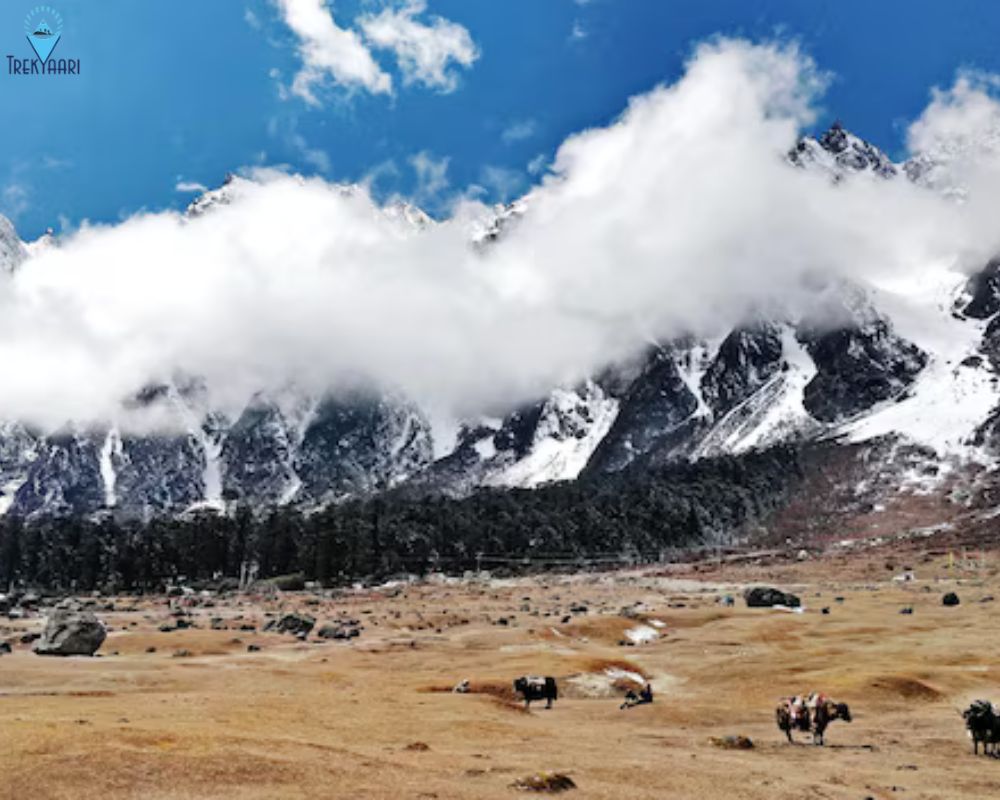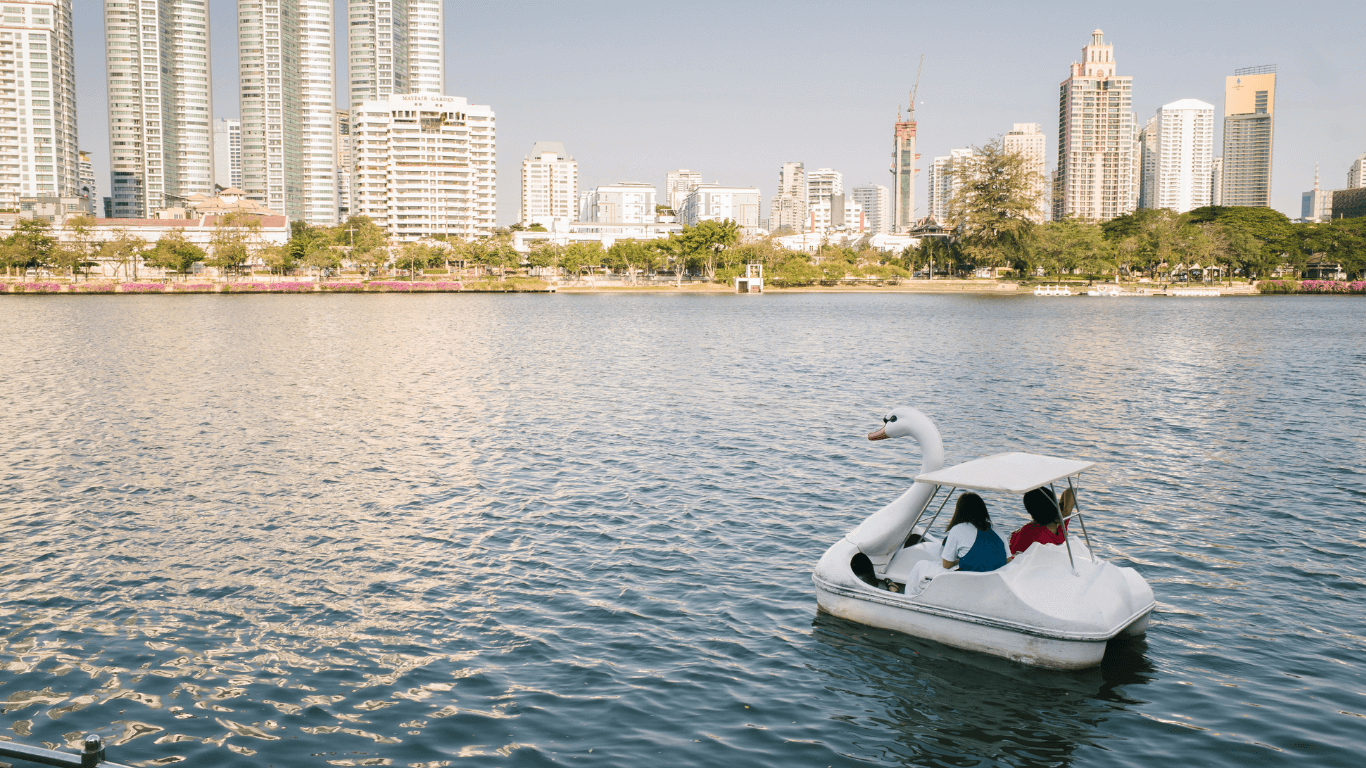
Top Tips for an Unforgettable Kuari Pass Trek Experience
Know the Best Time to Trek to Kuari Pass
Timing is crucial when planning your Kuari Pass trek. The trek can be undertaken in both summer and winter, each season offering a unique charm.
- Summer Season (April to June): During the summer months, Kuari Pass presents lush greenery, blossoming meadows, and clear skies. The temperatures are mild, making it a comfortable period for trekking. This is the best time for nature enthusiasts to witness the vibrant flora and fauna.
- Winter Season (December to February): The winter season brings a snow-covered landscape, creating a white wonderland perfect for those seeking a winter trekking experience. Temperatures can drop significantly, and trails can be challenging, but the sight of snow-covered peaks like Nanda Devi and Dronagiri is worth the extra effort.
Plan Your Route and Itinerary
Kuari Pass can be accessed from multiple routes, but the most common ones start from Joshimath in Uttarakhand. Below is a suggested itinerary that covers all key points while offering ample time to acclimatize and enjoy the trek.
- Day 1: Arrive at Joshimath. Spend the day acclimatizing to the altitude.
- Day 2: Trek from Joshimath to Gulling. This initial trek introduces you to the beautiful oak and rhododendron forests, and you’ll be accompanied by views of the Himalayan range.
- Day 3: Trek from Gulling to Khullara. The trail becomes steeper as you ascend. Here, you can set up camp with a breathtaking backdrop.
- Day 4: Summit Day – Khullara to Kuari Pass and return to Khullara. This day is challenging but rewarding as you finally reach Kuari Pass, where you’ll be rewarded with spectacular views of Nanda Devi, Chaukhamba, and other peaks.
- Day 5: Descend back to Joshimath via Gulling. This is a day to soak in the final views and end your trek on a high note.
Planning each day ensures that you have enough time to acclimate and rest between stretches, especially if you’re trekking in winter when conditions can be more challenging.
Prepare Physically for the Trek
Though Kuari Pass is considered a moderate trek, it requires a certain level of fitness. This trek involves ascending to an altitude of approximately 12,516 feet, demanding physical endurance and stamina. We recommend a training regimen that includes:
- Cardio Workouts: Running, cycling, or swimming will help build stamina.
- Strength Training: Focus on core and leg exercises to make uphill climbs easier.
- Endurance Training: Incorporate long walks or hikes with a weighted backpack to simulate trekking conditions.
Start training at least a month before the trek to ensure you’re in optimal shape to enjoy every part of the journey.
Pack the Right Gear and Essentials
Packing the right equipment can make or break your Kuari Pass trek. Here’s a checklist to ensure you’re well-prepared:
- Clothing Layers: Pack lightweight, moisture-wicking layers for summer and heavy insulation layers for winter. Merino wool base layers are ideal for cold conditions.
- Trekking Boots: Invest in sturdy, waterproof trekking boots with good ankle support.
- Sleeping Bag: In winter, a high-quality sleeping bag rated for sub-zero temperatures is essential.
- Trekking Poles: They help with balance on steep and uneven terrain.
- First Aid Kit: Include band-aids, pain relievers, blister pads, and altitude sickness medication.
- Hydration Bladder: Staying hydrated is crucial, especially at high altitudes.
Ensure your backpack is lightweight yet spacious enough to hold all essentials without overloading you.
Understand the Altitude and Take Precautions
Altitude sickness is a real concern in the Kuari Pass trek due to the high altitudes reached. To avoid altitude sickness, follow these precautions:
- Acclimatize: Spend a day in Joshimath or a nearby town before starting the trek.
- Hydrate Regularly: Drink plenty of water and avoid alcohol and caffeine, which can dehydrate you.
- Ascend Gradually: Avoid quick altitude gain; take your time on the trail to allow your body to adjust.
- Symptoms to Watch For: Headaches, dizziness, and nausea are common signs of altitude sickness. If you experience any of these, take a rest or descend to a lower altitude.
Following these precautions can help you minimize the risk of altitude sickness and enjoy a safer trekking experience.
Respect Local Culture and Environment
The Kuari Pass trek goes through villages and sacred lands that are home to local communities and rich biodiversity. Respecting the environment and local culture is essential.
- Follow Leave No Trace Principles: Carry all your waste with you and dispose of it properly.
- Respect Sacred Sites: Certain areas on the trek hold religious significance for the locals; avoid littering or disrespectful behaviour.
- Support Local Communities: Purchase goods from local shops and hire local guides or porters, which helps sustain the local economy.
Capture Memories, but Be Present
While capturing the beauty of Kuari Pass through photographs is tempting, remember to be present and fully immersed in the surroundings. Each sunrise, sunset, and mountain view offers an unparalleled experience that no camera can truly capture.
Stay Informed about the Weather
Weather in the Himalayas can be unpredictable, and Kuari Pass is no exception. Stay updated on the weather forecast for the region, especially during winter when snowstorms can occur.
Choose a Reputable Trekking Company or Guide
For a seamless Kuari Pass trek experience, it’s wise to hire a reliable trekking company or guide. A knowledgeable guide can enhance your trekking experience by providing insights into the local culture, fauna, and history of the region.
Conclusion
The Kuari Pass trek is an enchanting experience that offers a profound connection to nature, culture, and adventure. Following these tips will prepare you to embrace the beauty of the trek while ensuring a safe and memorable journey. Remember, the Himalayas reward those who approach them with respect, resilience, and preparation.



